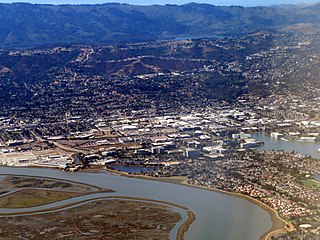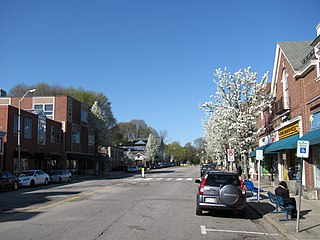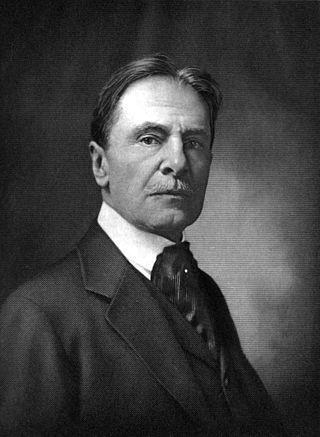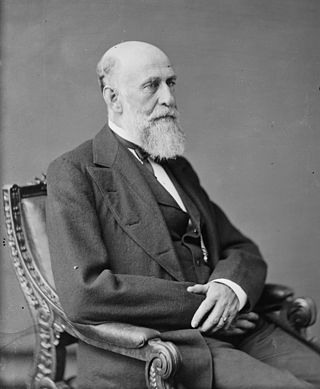
Vermont is a landlocked New England state in the Northeastern United States. It is bordered by the states of Massachusetts to the south, New Hampshire to the east, New York to the west, and the Canadian province of Quebec to the north. As of the 2020 U.S. census, the state had a population of 643,503, ranking it the second least populated U.S. state. It is the nation's sixth smallest state in area. The state's capital of Montpelier is the least populous U.S. state capital. No other U.S. state has a most populous city with fewer residents than Burlington.

Rutland County is a county located in the U.S. state of Vermont. As of the 2020 census, the population was 60,572, making it the second-most populous county in Vermont. Its county seat and most populous municipality is the city of Rutland.

Belmont is a city in San Mateo County in the U.S. state of California. It is in the San Francisco Bay Area, on the San Francisco Peninsula about halfway between San Francisco and San Jose. Known for its wooded hills, views of the San Francisco Bay and stretches of open space, Belmont is a quiet residential community in the midst of the culturally and technologically rich Bay Area. It was originally part of Rancho de las Pulgas, for which one of its main roads, the Alameda de las Pulgas, is named. The city was incorporated in 1926. Its population was 28,335 at the 2020 census.

Mount Holly is a town in Rutland County, Vermont, United States. It includes the hamlets of Belmont, Healdville, Hortonville, and Tarbellville. The population was 1,385 at the 2020 census.

Belmont is a town in Middlesex County, Massachusetts, United States. It is a western suburb of Boston, Massachusetts, United States; and is part of the Greater Boston metropolitan area. At the 2020 U.S. census, its population was 27,295, up 10.4% from 2010.

The Vermont Republic, officially known at the time as the State of Vermont, was an independent state in New England that existed from January 15, 1777, to March 4, 1791. The state was founded in January 1777, when delegates from 28 towns met and declared independence from the jurisdictions and land claims of the British colonies of Quebec, New Hampshire, and New York. The republic remained in existence for the next fourteen years, albeit without diplomatic recognition from any foreign power. On March 4, 1791, it was admitted into the United States as the State of Vermont, with the constitution and laws of the independent state continuing in effect after admission.

Belmont Lake State Park is a 463-acre (1.87 km2) day-use state park located in North Babylon, New York, United States on Long Island.

Justin Smith Morrill was an American politician and entrepreneur who represented Vermont in the United States House of Representatives (1855–1867) and United States Senate (1867–1898). He is most widely remembered for the Morrill Land-Grant Acts that provided federal funding for establishing many of the United States' public colleges and universities. Originally a Whig, after that party became defunct Morrill was one of the founders of the Republican Party.
These are tables of congressional delegations from Vermont to the United States Senate and United States House of Representatives.

August Belmont Sr. was a German-American financier, diplomat, and politician. He served as Chair of the Democratic National Committee from 1860 to 1872. He was also a thoroughbred racehorse owner and the founder and namesake of the Belmont Stakes, the third leg of the Triple Crown of American Thoroughbred horse racing.

Perry Belmont was an American politician and diplomat. He served four terms in the U.S. House of Representatives from 1881 to 1888.

Orson is a village in Preston Township, Wayne County, Pennsylvania, United States, situated in the Lake Region of the Poconos. It was once an important depot of the Scranton Division of the New York, Ontario & Western (O&W) Railway, but today, when it is known outside of its immediate vicinity, it is largely for being the site of the intersection of two state roads, Belmont Turnpike and Crosstown Highway, or as the location of Independent Lake Camp (ILC), since ILC's reputation and commercial reach, like those of most rural American summer camps, extend beyond the community in which the camp is physically located.

Vermont Route 155 (VT 155) is a 10.377-mile-long (16.700 km) north–south state highway in central Vermont, United States. It runs from VT 100 in Weston in the south to VT 103 in East Wallingford in the north. Much of the highway goes through the Green Mountain National Forest.

Portus Baxter was a nineteenth-century banker, farmer, and politician from Vermont. He served as a U.S. Representative from the state's 3rd Congressional District from 1861 to 1867.

The Belmont–Paul Women's Equality National Monument is a historic house and museum of the U.S. women's suffrage and equal rights movements located in the Capitol Hill neighborhood of Washington, D.C. The monument is named after suffragists and National Woman's Party leaders Alva Belmont and Alice Paul.

Elections in Vermont are authorized under Chapter II of the Vermont State Constitution, articles 43–49, which establishes elections for the state level officers, cabinet, and legislature. Articles 50–53 establish the election of county-level officers.

George Franklin Edmunds was an American attorney and Republican politician who represented the state of Vermont in the United States Senate from 1866 to 1891. He was a candidate for the Republican presidential nomination in 1880 and 1884 as a leading representative of New England and of the faction favoring civil service reform.
James Watson Webb II was an American polo champion and insurance executive. He was a grandson of William Henry Vanderbilt and James Watson Webb.

Paleontology in Vermont comprises paleontological research occurring within or conducted by people from the U.S. state of Vermont. Fossils are generally uncommon in Vermont. Nevertheless, however, significant finds have been made in the state. Very few fossils are known in Vermont east of the Green Mountains due to the type of rock underlying that area. During the early part of the Paleozoic era, Vermont was covered by a warm, shallow sea that would end up being home to creatures like brachiopods, corals, crinoids, ostracoderms, and trilobites. There are no rocks in the state from the Carboniferous, Permian, Triassic, or Jurassic periods. The few Cretaceous rocks present contain no fossils. The Paleogene and Neogene periods are also absent from the local rock record. During the Ice Age, glaciers scoured the state. At times the state was inundated by seawater, allowing marine mammals to venture in. After the seawater drained away the state was home to mastodons. Local fossils had already attracted scientific attention by the mid-19th century when mastodon remains were found in Rutland County. In 1950 a major Paleozoic invertebrate find occurred. The Pleistocene Beluga whale Delphinapterus leucas is the Vermont state fossil.


















